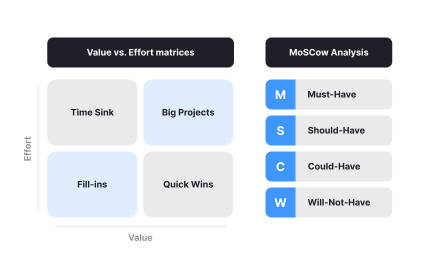Platform Strategy
Platform strategy guides how a product supports partners, third-party developers, or integrations while delivering consistent user value.
What is Platform Strategy?
You're trying to grow your business but struggle to scale because every new customer, product, or market requires building everything from scratch. You've probably watched competitors achieve exponential growth through platform effects while your linear growth model hits capacity constraints.
Most businesses think of platforms as technology when platform strategy is actually about creating ecosystems where multiple parties create value for each other, enabling growth that scales beyond your direct resources and capabilities.
Platform strategy is the business model approach that creates value by facilitating interactions between external producers and consumers, leveraging network effects and ecosystem dynamics to achieve scalable growth through other participants' contributions rather than just internal resource expansion.
Platform businesses achieve 70% higher profit margins, grow 5x faster, and create market valuations 10-20x higher than traditional linear businesses because they scale through network effects rather than operational expansion alone.
Think about how Apple's App Store creates value for developers and users while generating revenue from transactions, or how Amazon's marketplace enables third-party sellers while strengthening Amazon's customer value proposition through selection and convenience.
Why Platform Strategy Matters for Scalable Growth
Your business growth is limited by internal resources and capabilities, requiring proportional investment increases for revenue growth while competitors using platform models achieve exponential scaling through network effects and ecosystem contributions.
The cost of linear business models becomes prohibitive at scale. You hit hiring limitations, operational complexity, market expansion barriers, and competitive disadvantage against platforms that harness external resources for growth and innovation.
What effective platform strategy delivers:
Exponential scaling potential because platforms grow through network effects where each new participant increases value for existing participants, creating self-reinforcing growth cycles that don't require proportional resource investment.
When you add one more buyer to a marketplace, every seller benefits from increased demand. When you add one more seller, every buyer benefits from increased selection. This creates growth momentum that feeds on itself.
Enhanced customer value through ecosystem effects that provide more comprehensive solutions than any single company could develop internally, improving customer satisfaction and competitive positioning.
Accelerated innovation as external developers, partners, or participants contribute ideas, features, and solutions that expand platform capabilities faster than internal R&D alone could achieve.
Higher profit margins because platforms often generate revenue from transactions or subscriptions without bearing full costs of content creation, inventory, or service delivery that ecosystem participants provide.
Stronger competitive moats as network effects and ecosystem switching costs create barriers that make customer acquisition increasingly difficult for competitors trying to enter established platform markets.
Advanced Platform Strategy Approaches
Once you've established basic platform operations, implement sophisticated ecosystem development and competitive positioning strategies.
Multi-Sided Market Orchestration: Design complex platform ecosystems that serve multiple distinct participant types with different value propositions while maintaining balanced growth across all sides.
Data Network Effects: Leverage platform data to create machine learning and intelligence capabilities that improve with scale, creating competitive advantages that compound over time.
Platform Partnership Strategy: Build strategic relationships with complementary platforms and ecosystems that expand your addressable market while strengthening network effects through integration.
Global Platform Scaling: Adapt platform strategies for different geographic markets, regulatory environments, and cultural contexts while maintaining core network effect benefits.
Recommended resources
Courses

UX Research

Enhancing UX Workflow with AI

Design Thinking
Lessons

Roadmaps and Prioritization

Decision-Making and Trade-Offs





